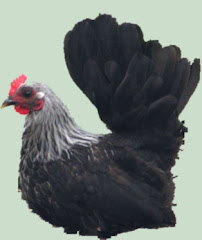One of the interesting things about planting so many heirloom varieties is that you get a lot more climbing things. Almost all modern tomatoes found in the catalogs are determinate. They grow to a certain height, set fruit at once, and die. Lovely for farmers, but not so lovely for most gardeners, who may not want to spend harvest weekend putting up a garden’s worth of tomatoes. Many of the older varieties are vining tomatoes. They grow and make fruit and flowers until frost (or disease or pests) strike them dead. The same is true with beans – almost all the beans in the catalogs are “bush” beans. Hmmm. I love climbing plants – there’s something satisfying about watching plants cover a trellis or fence (or fellow plant). Last year, bindweed or morning glory nearly consumed the community garden, swarming up and over everything in its way. It took near-daily vigilance to keep the vines from covering the garden in a blaze of blue and white flowers and brilliant green leaves. Where there was no fence, it clambered up tomatoes and sunflowers just as happily. I like to imagine it dormant under the ice, plotting to vault from the mass of dead oat grass over the tender seedlings yet to be planted.
I am planting vines this year, then. All my tomato varieties are indeterminate – partly luck, but also because they’re from Seed Savers, and the urge to grow and set fruit at will has not been bred out for the convenience of the commercial grower. Most of my beans are bush habit, which is actually sort of a good thing, considering how much fun it is to make trellises. The limas and (shockingly) the Climbing French Beans climb. And, of course, my peas. Last year I bought Dwarf Grey Sugar Peas. They were neither dwarf nor grey, and there weren’t very many peas. Instead of being the 2.5-3’ advertised, my plants hit the top of the 5’5” fence and kept going. This year I have naturally taller varieties (Golden Sweet and Mammoth) and one short variety (British Wonder). We’ll see what we see.
So here are the variety choices for 2008. Even I realize that there's no way that all of these can be fully planted out, so I've got a lot of reading to do to figure out how much of what to plant. These are just the seeds broken out into categories.
I pretty much plan on planting all the peas. I’m especially excited about the Golden Sweet, which is supposedly one of the varieties Mendel used in his experiments. And beans are marvelous, and supposedly easy to save for seed. Other than that, I want to plant a variety of things and try saving seeds. Squash and melons are among the easiest things to give away - no washing, no packaging, just the handing over of pre-packaged flesh. I'm sitting down with Eliot Coleman's graphs tonight to see when I should expect to plant and harvest the other sorts of bounty. Hopefully I can work out something.
Beans
Arikara Yellow
Climbing French Bean
Jacob's Cattle Gasless
Lina Cisco's Bird Egg
Shirofuma(Shirofumi?)
Sieva Lima Bean
Beet
Albino
Bull's Blood
Broccoli
Romanesco Broccoli
Cabbage
Mammoth Red Rock Cabbage
Des Vertus Cabbage
Five Color Silverbeet
Corn
Country Gentleman
Golden Bantam
Cucumber
Armenian Cucumber
Double Yield Cucumber
Jelly Melon Cucumber
White Wonder Cucumber
Eggplant
Goyo Kumba
Lao Purple Stripe
Red Ruffled Eggplant
Turkish
Grains
Copperhead Amaranth
Herbs
Sweet Basil Genova strain.
Thai Basil
Garlic Chives Allium tuberosum
Zefa Fino Fennel
Lavender Lavandula angustifolia
Lemon Balm Melissa officinalis
Lovage "Magnus"
Sweet Marjoram Origanum majorana
Common Mint Mentha spicata
Triple-curled parsley
Rosemary Rosmarinus officinalis
Broadleaf Sage Salvia officinalis
Spearmint
Thyme
German Thyme Thymus vulgaris
Lettuce and Greens
Amish Deer Tongue Lettuce
Red Leprechaun Lettuce
Arugula (“wild”)
Curly Cress
Green Wave Mustard
Hon Tsai Tai
Red Shiso Perilla frutescens
Reine des Glaces Lettuce - (a.k.a. Ice Queen)
Melons
Jenny Lind Melon
Pride of
Schoon's Hard Shell
Small Shining Light Watermelon
Okra
Clemson Spineless Okra
Onion
White Wing Onion
Parsnip
Harris Model Parsnip
Pea
British Wonder Pea
Golden Sweet Pea
Mammoth Melting Sugar Pea
Pepper
Balloon Pepper
Candlelight Pepper
Georgia Flame Pepper
Thai Hot Pepper
Tobago Seasoning Pepper
Wenk's Yellow Hots
Squash
Anna Swartz Hubbard Squash
Chirimen Squash
Fordhook Acorn Squash
Galeux d'Eysines
Jaune et Verte Squash
Sweet Meat Winter Squash
Tomatillo
Purple Tomatillo
Tomatoes
Amish Paste
Bloody Butcher
Giant Syrian Tomato
Gourmet Yellow Stuffer Tomato
Purple Russian Tomato
Roman Candle Tomato
Turnip
Purple Top White Globe Turnip
Flashback Calendula
Painted Tongue - Salpiglossis sinuata
King-size Strawflower Mixture - Helichrysum bracteatum
Mahogany Midget - Coreopsis tinctoria.
Sacred datura - Datura wrightii
Black Peony Poppy
Wildflower Mix - Dame’s Rocket, Black-Eyed Susan, Shirley Poppy, Blazing Star and Bachelor’s Button.
Nasturtium
Ladybird Nasturtium
Tall Climbing Mix
Tip Top Nasturtium Mix
Sunflower
Autumn Beauty Mix Sunflower
